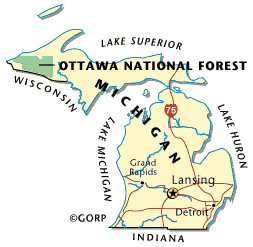|
|
 |
|
|
 |
| Step1:
|
Time frames
used:
These data were taken from the Miris1
Database available through the University of Michigan SNRE-GIS Research
Laboratory.
Available through the Michigan DNR
|
| Step 2:
|
Data Sources:
U.S. Forest Service; Ottawa National Forest Mointoring and Evaluation Report, FY
1994
MI Department of Natural Resources; Marquette 1997 Michigan and Wisconsin Deer Exclosure
Survey
Report to LS-FOREM Northern Hardwoods
Subcommitte
|
| Step 3:
|
Tools:
ArcView 3.1 Excel These software programs were made available
by the
University of Michigan Campus Computing
Sites
(at infrequent intervals.)
|
| Step 4:
|
Further considerations
and analyses:
Analyze the approach in estimating deer populations. Amount of sunlight reaching forest floor Examine the influence of climatic patterns as measured by minimum temperatures 1 meter from the ground. |
|
|